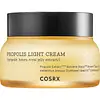What's inside
What's inside
 Key Ingredients
Key Ingredients

 Benefits
Benefits

 Concerns
Concerns

No concerns
 Ingredients Side-by-side
Ingredients Side-by-side

Camellia Sinensis Leaf Water
MaskingButylene Glycol
HumectantPropanediol
SolventWater
Skin Conditioning1,2-Hexanediol
Skin ConditioningCaprylic/Capric Triglyceride
MaskingCentella Asiatica Leaf Extract
Skin ConditioningHydroxyethyl Acrylate/Sodium Acryloyldimethyl Taurate Copolymer
Emulsion StabilisingAcrylates/C10-30 Alkyl Acrylate Crosspolymer
Emulsion StabilisingArginine
MaskingLauryl Glucoside
CleansingAllantoin
Skin ConditioningPolyglyceryl-6 Laurate
EmulsifyingEthylhexylglycerin
Skin ConditioningMyristyl Glucoside
CleansingSorbitan Isostearate
EmulsifyingDisodium EDTA
Rosmarinus Officinalis Leaf Oil
MaskingCynanchum Atratum Extract
Skin ConditioningGlycerin
HumectantCitric Acid
BufferingAloe Barbadensis Leaf Extract
EmollientRosa Multiflora Extract
AntioxidantChrysanthemum Zawadskii Extract
Skin ConditioningChamomilla Recutita Flower Extract
MaskingBioflavonoids
Skin ConditioningBrassica Oleracea Italica Extract
AstringentBrassica Oleracea Capitata Leaf Extract
Skin ConditioningUrtica Urens Leaf Extract
Skin ConditioningSpinacia Oleracea Leaf Extract
Skin ConditioningSedum Sarmentosum Extract
HumectantPortulaca Oleracea Extract
Skin ConditioningHouttuynia Cordata Extract
Skin ConditioningCarum Petroselinum Extract
Skin ConditioningBrassica Oleracea Acephala Leaf Extract
HumectantApium Graveolens Extract
Skin ConditioningTriticum Vulgare Sprout Extract
Skin ConditioningMedicago Sativa Extract
TonicRaphanus Sativus Seed Extract
Skin ConditioningBrassica Campestris Extract
Skin ConditioningCamellia Sinensis Leaf Water, Butylene Glycol, Propanediol, Water, 1,2-Hexanediol, Caprylic/Capric Triglyceride, Centella Asiatica Leaf Extract, Hydroxyethyl Acrylate/Sodium Acryloyldimethyl Taurate Copolymer, Acrylates/C10-30 Alkyl Acrylate Crosspolymer, Arginine, Lauryl Glucoside, Allantoin, Polyglyceryl-6 Laurate, Ethylhexylglycerin, Myristyl Glucoside, Sorbitan Isostearate, Disodium EDTA, Rosmarinus Officinalis Leaf Oil, Cynanchum Atratum Extract, Glycerin, Citric Acid, Aloe Barbadensis Leaf Extract, Rosa Multiflora Extract, Chrysanthemum Zawadskii Extract, Chamomilla Recutita Flower Extract, Bioflavonoids, Brassica Oleracea Italica Extract, Brassica Oleracea Capitata Leaf Extract, Urtica Urens Leaf Extract, Spinacia Oleracea Leaf Extract, Sedum Sarmentosum Extract, Portulaca Oleracea Extract, Houttuynia Cordata Extract, Carum Petroselinum Extract, Brassica Oleracea Acephala Leaf Extract, Apium Graveolens Extract, Triticum Vulgare Sprout Extract, Medicago Sativa Extract, Raphanus Sativus Seed Extract, Brassica Campestris Extract
Propolis Extract
Skin ConditioningButylene Glycol
HumectantGlycerin
HumectantCaprylic/Capric Triglyceride
MaskingHelianthus Annuus Seed Oil
Emollient1,2-Hexanediol
Skin ConditioningHoney Extract
HumectantRoyal Jelly Extract
Skin ConditioningHydroxyethyl Acrylate/Sodium Acryloyldimethyl Taurate Copolymer
Emulsion StabilisingCassia Obtusifolia Seed Extract
Skin ConditioningCetearyl Olivate
Beeswax
Emulsion StabilisingCetearyl Alcohol
EmollientSorbitan Olivate
EmulsifyingAllantoin
Skin ConditioningArginine
MaskingCarbomer
Emulsion StabilisingXanthan Gum
EmulsifyingPropolis Extract, Butylene Glycol, Glycerin, Caprylic/Capric Triglyceride, Helianthus Annuus Seed Oil, 1,2-Hexanediol, Honey Extract, Royal Jelly Extract, Hydroxyethyl Acrylate/Sodium Acryloyldimethyl Taurate Copolymer, Cassia Obtusifolia Seed Extract, Cetearyl Olivate, Beeswax, Cetearyl Alcohol, Sorbitan Olivate, Allantoin, Arginine, Carbomer, Xanthan Gum
 Reviews
Reviews

Ingredients Explained
These ingredients are found in both products.
Ingredients higher up in an ingredient list are typically present in a larger amount.
1,2-Hexanediol is a synthetic liquid and another multi-functional powerhouse.
It is a:
- Humectant, drawing moisture into the skin
- Emollient, helping to soften skin
- Solvent, dispersing and stabilizing formulas
- Preservative booster, enhancing the antimicrobial activity of other preservatives
Allantoin is a soothing ingredient known for its protective and moisturizingg properties. Because of this, it is often added to products with strong active ingredients.
Studies show higher concentrations of this ingredient can promote wound healing.
Though it can be derived from the comfrey plant, allantoin is produced synthetically for cosmetic products to ensure purity.
Learn more about AllantoinArginine is an amino acid that is important for human development. Your body uses is it to produce hair keratin and skin collagen.
As a cosmetic ingredient, Arginine has antioxidant properties and can also help repair damaged skin. This ingredient is derived either synthetically or from animals.
Arginine isn't fungal acne safe when used in the presence of other lipids (fats, fatty acids, oils, esters, etc). Oils and fats occur naturally within the skin, so take caution when using Arginine if you're prone to fungal acne.
Learn more about ArginineButylene Glycol (or BG) is used within cosmetic products for a few different reasons:
Overall, Butylene Glycol is a safe and well-rounded ingredient that works well with other ingredients.
Though this ingredient works well with most skin types, some people with sensitive skin may experience a reaction such as allergic rashes, closed comedones, or itchiness.
Learn more about Butylene GlycolThis ingredient is an emollient, solvent, and texture enhancer. It is considered a skin-softener by helping the skin prevent moisture loss.
It helps thicken a product's formula and makes it easier to spread by dissolving clumping compounds.
Caprylic Triglyceride is made by combining glycerin with coconut oil, forming a clear liquid.
While there is an assumption Caprylic Triglyceride can clog pores due to it being derived from coconut oil, there is no research supporting this.
Learn more about Caprylic/Capric TriglycerideGlycerin is already naturally found in your skin. It helps moisturize and protect your skin.
A study from 2016 found glycerin to be more effective as a humectant than AHAs and hyaluronic acid.
As a humectant, it helps the skin stay hydrated by pulling moisture to your skin. The low molecular weight of glycerin allows it to pull moisture into the deeper layers of your skin.
Hydrated skin improves your skin barrier; Your skin barrier helps protect against irritants and bacteria.
Glycerin has also been found to have antimicrobial and antiviral properties. Due to these properties, glycerin is often used in wound and burn treatments.
In cosmetics, glycerin is usually derived from plants such as soybean or palm. However, it can also be sourced from animals, such as tallow or animal fat.
This ingredient is organic, colorless, odorless, and non-toxic.
Glycerin is the name for this ingredient in American English. British English uses Glycerol/Glycerine.
Learn more about GlycerinThis is a synthetic polymer. It helps improve the texture of products by adding thickness and gel-like feel.
It is also an emulsifer, meaning it prevents ingredients such as oil and water from separating. It also helps evenly disperse other ingredients.